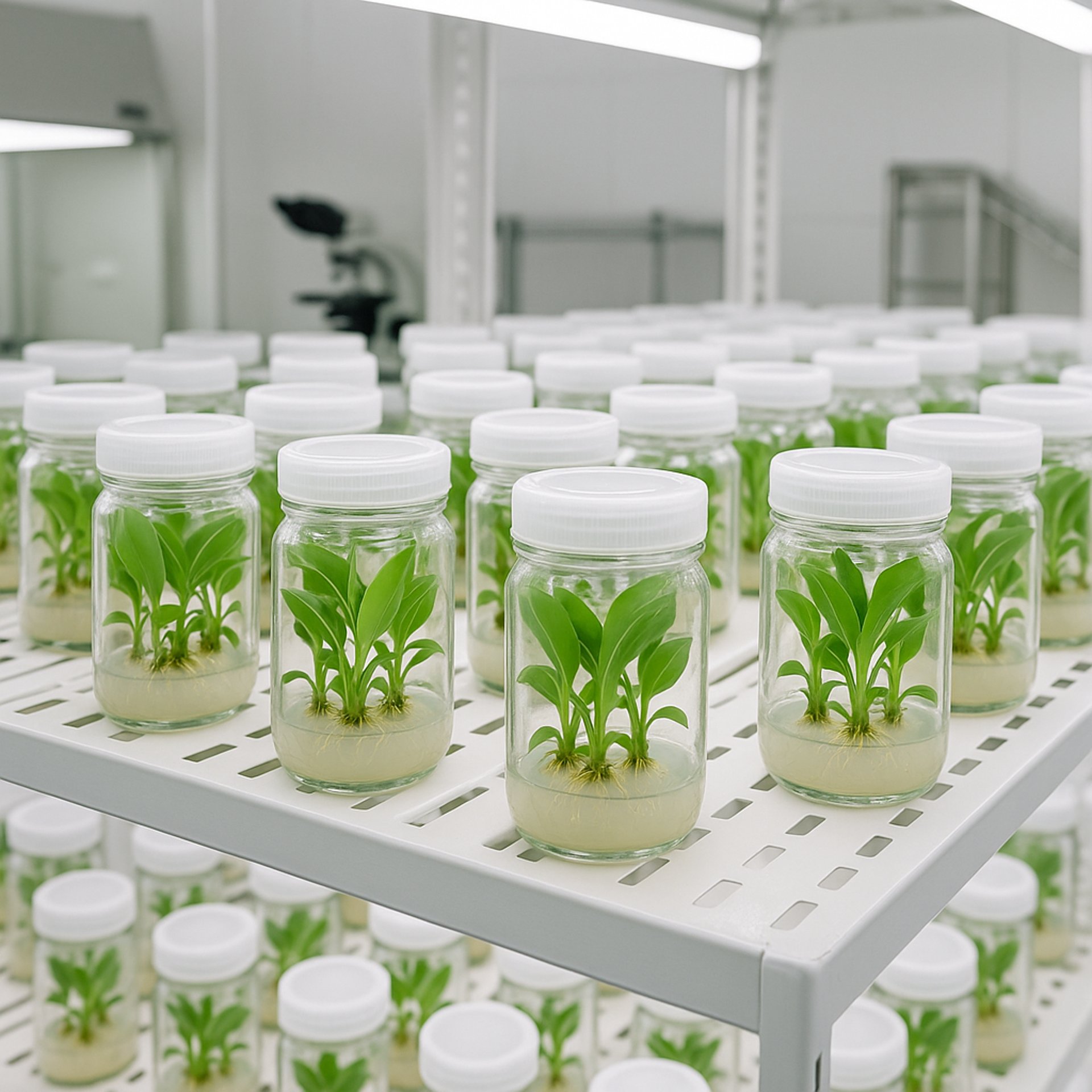🌱 What Are Tissue Culture Plants? A Farmer’s Guide
Understanding Tissue Culture Plants Tissue culture is a method of growing new plants from tiny parts of a healthy mother plant in a lab.
Shweta Malviya
5/16/20253 min read

Understanding Tissue Culture Plants
Tissue culture is a method of growing new plants from tiny parts of a healthy mother plant in a lab.
The process happens in a sterile, controlled environment, usually using parts like leaves, roots, or shoots. These parts are grown in nutrient-rich media to produce identical plantlets.
The key word here is identical. Every plant grown from tissue culture has the same qualities as the mother plant—whether it’s yield, resistance to disease, or fruit size.
This method allows farmers to access plants with better performance, faster growth, and uniformity.
It’s especially useful for crops that are difficult to grow from seeds or are prone to disease during regular propagation.
In simple words, tissue culture gives you more control over what you're growing—and what you can earn.
Farmers no longer need to wait for seasonal changes or risk poor germination.
They can start strong with healthy, ready-to-plant saplings.
Why Farmers Are Turning to Tissue Culture
Traditional methods often come with problems—poor seed quality, pest attacks, uneven growth.
Tissue culture solves these by providing:
Disease-free plants
High yield per acre
Faster harvest times
Consistency across the field
For farmers looking to maximize land use and profit, these factors are a game changer.
Moreover, the availability of quality planting material is no longer tied to the local nursery or market supply.
You get a reliable source of healthy plants that deliver better results.
And since tissue culture plants are uniform, they mature at the same time. This makes planning for harvesting and market sales easier.
In short, it brings predictability into a world often ruled by uncertainty.
Benefits of Tissue Culture in Agriculture
1. Better Yields
Plants are selected from the best mother stock. This means every plant has strong genetics that support higher production.
2. Disease-Free Crops
Growing plants in a sterile lab removes common diseases. You start with clean, healthy saplings.
3. Uniformity
Since all plants are clones, their height, size, and growth pattern are consistent. This makes farm management easier.
4. Rapid Multiplication
Thousands of plants can be produced from one mother plant in a short period. This is perfect for crops in high demand.
5. Space Efficiency
You can grow millions of plants in a small lab space before transplanting them into the field.
6. Better Quality Control
From lab to land, every step is monitored. This leads to consistent quality and better income.
For farmers, this means less risk, more reward.
Common Crops Grown Through Tissue Culture
Many high-value and fast-growing crops respond well to tissue culture:
Banana
Strawberry
Potato
Sugarcane
Turmeric
Bamboo
Medicinal plants like Aloe Vera
Ornamental plants like orchids
These crops usually offer higher market prices and better return on investment.
Farmers who specialize in these see faster income cycles and improved margins.
Banana, for example, sees a 25–30% increase in yield with tissue culture plants.
How to Start Tissue Culture Farming
Step 1: Choose the Right Crop
Focus on crops that grow well in your region and have good demand.
Step 2: Get Quality Plantlets
Buy only from certified tissue culture labs or nurseries. Check for lab accreditation and plant health.
Step 3: Prepare Your Land
Land preparation is critical. Since tissue culture plants grow fast, ensure soil is nutrient-rich and pest-free.
Step 4: Training and Support
Seek guidance on spacing, irrigation, and crop care. Many labs provide farmer training sessions.
Step 5: Monitor and Maintain
These plants may need more attention initially, especially with watering and nutrients.
But once established, they outperform traditional crops significantly.
Challenges to Be Aware Of
While tissue culture offers many benefits, it’s not without risks.
Initial Cost:
Buying lab-grown plantlets can be more expensive than seeds or cuttings.
Care Requirements:
Young plantlets need proper handling. They are delicate during early growth stages.
Market Access:
Farmers must plan for where and how they’ll sell the higher volumes produced.
Knowledge Gap:
Not every farmer is aware of how to use this method. Training is essential for success.
But with the right support, these issues can be managed.
Cost vs Profit Potential
Tissue culture farming often has a higher upfront cost. But it pays back quickly.
Higher yields + better quality = better market price.
Banana farmers using tissue culture see returns of ₹4–5 lakh per acre instead of ₹2–3 lakh.
Over time, your cost per plant drops as volume increases.
Government Support and Subsidies
In India, schemes like the National Horticulture Mission and state-level agri programs offer:
Subsidies for plantlet purchase
Financial help for lab setup
Farmer training sessions
Visit your local agri office or Krishi Vigyan Kendra (KVK) for updates.
👨🌾 Who Should Use Tissue Culture Plants?
Banana, papaya, and sugarcane growers looking for better yields
Agroforestry investors interested in teak plantations
Nurseries and agribusinesses wanting quality stock
New-age farmers seeking smart, sustainable solutions
💬 Final Thoughts
Tissue culture is more than a lab technique—it's a powerful tool that helps farmers improve production, reduce losses, and earn more from every acre. At Shnikh Agrobiotech, we specialize in delivering high-quality, hardened, ready-to-plant tissue culture plants to farmers across India.
If you're ready to take your farm to the next level, get in touch with us today!
📩 Need help choosing the right plants?
Or visit our Contact Page to send an inquiry.
Connect
Get in touch for inquiries and collaborations.
Follow
Explore
© 2025. All rights reserved.
